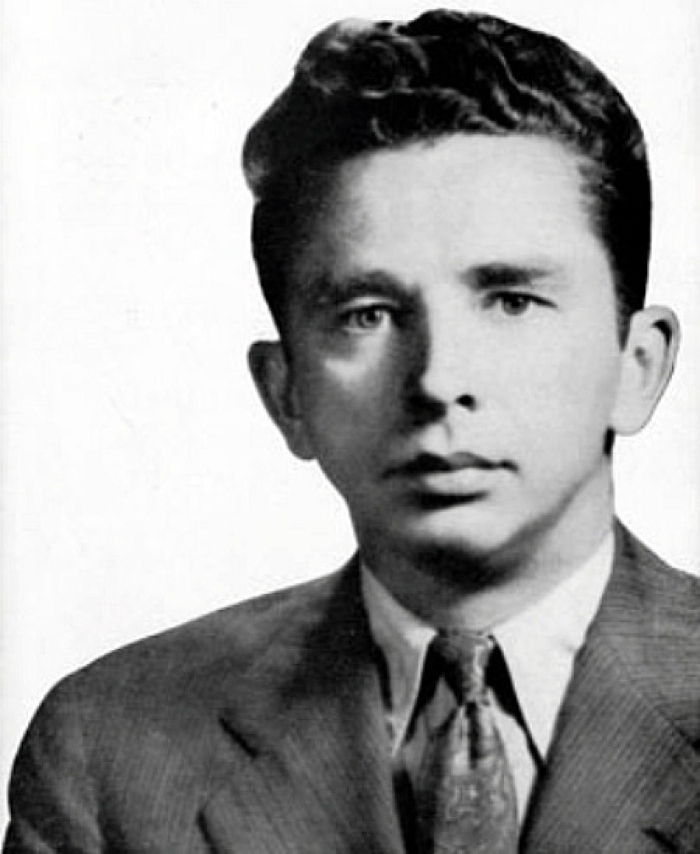This essay originally appeared in Fic: Why Fanfiction is Taking Over the World (Dallas, Smart Pop, 2013), edited by the amazing Anne Jamison. Buy the book; it’s a great collection from a unique press, and worth supporting.
APRIL 1, 2014: There are some interesting echoes of what I have to say here in Brian Droitcour’s “Young Incorporated Artists.”
Conceptual Writing and Fanfiction are the Bearded Spocks of their respective universes.
If you’re reading this, you probably already know more about fanfiction than I do.
What I know about is a thing called conceptual writing. And I think that one useful way to think about conceptual writing is as fanfiction about conceptual art.
Another might be to say that, in neighboring universes that overlap slightly, both fanfiction and conceptual writing play the role of bearded Spock. What I want to consider in this brief essay is the value of a kind of forced cultural exchange. In the event of an unexpected ion storm and a transporter accident, or its prose equivalent, is there anything useful that writers of fanfiction and conceptual writing might learn from each other? It’ll take me a few hundred words to get to the point where we can find out.
Conceptual writing is a term that has come to describe the work that my friends and I have produced over the last dozen years. One major example is Kenneth Goldsmith’s Day, which consists of the entire text from the September 1, 2000 issue of the New York Times—stock quotes, ads, captions, and all—reset in 9-point type, reproduced line by line, and bound as a massive paperback book, with Goldsmith listed as the author.1 In more general terms, conceptual writing is a catchall description for a mixed bag of writing techniques used by people who are interested in the impact of networked digital media on the creative process, the social function of authorship, and the economy of publishing.
This sort of writing is fannish in the sense that it draws much of its inspiration from things that were happening in the art world from the mid-1960s to the late 1970s. Conceptual art is a big, complex category, but Alexander Alberro usefully describes it in terms of four major “trajectories”: a deemphasizing of the importance of the artist’s technical skill and the cohesiveness of the final product; an increasing emphasis on the importance of text over images; a shift away from the aesthetically pleasing toward the conveyance of that odd modern invention we call information; and a questioning of how art is “supposed” to be framed, and the notion that there is a “correct” context (like a gallery) in which people are supposed to encounter it (pp. xvi, xvii ).2 Conceptual writing follows these trajectories because, with a few exceptions, they had been largely ignored by literary writers.
Before there was a clear consensus about what it was or what it was going to be called, what conceptual writing did was to draw attention to the rhetorical aspects of writing that canonical literature usually neglects: weather reports, legal transcripts, social media feeds, stock quotes, Usenet posts, and so on. These texts are the “dark matter” of literature; they make up the bulk of everything that’s written, but we habitually pretend that they don’t matter in any capacity other than the moment.
John Guillory describes such texts as belonging to what he calls “information genres.” In order to use them to convey that peculiar modern invention we call “information,” we have to pretend that they have no rhetorical value of their own that might taint it.3) By repackaging great swaths of information in media and formats other than the ones in which it initially appeared— again, think about Goldsmith reformatting the New York Times as a book—conceptual writing drew attention to the fact that all writing is poetic. It is poetic in that it always says more than we intend, and we assign value to it in keeping with large sets of external factors that sometimes have little to do with the ostensible content.
What conceptual writing does now is produce more poetry.
Over thirty years ago, legendary avant-garde poet and small-press publisher Bob Cobbing remarked that “there is no point whatsoever in adding to the quantity of poetry in this world. The world has quite enough poetry already. Probably too much. Far too much. The only excuse for being a poet today is to add to the quality of poetry, to add a quality which was not there before.”4 From Cobbing’s perspective, the job of the writer is not to produce more of something already recognizable, but to constantly shift approaches and techniques, literally making difference. Rather than simply adding to the bulk of unread books on the shelf, conceptual writing, like Cobbing’s work—and, I’d argue, like fanfiction—reframes big chunks of culture in a different context than they originally appeared, so that we can think about just how odd they actually are.
As is the fate of all successful cultural interventions, conceptual writing no longer exists on the margins of culture; it has become (semi-) respectable. Conceptual writers have performed in the Whitney Museum of American Art and the White House, and Goldsmith was selected as the Museum of Modern Art’s Poet Laureate for 2013. Say what you want about these institutions and whether or not conceptual writing deserves a place in them, but they’re very definitely not the margins. Conceptual writing has also produced the inevitable signs of cultural legitimacy: two giant, doorstop-sized anthologies, Against Expression: An Anthology of Conceptual Writing5 and I’ll Drown My Book: Conceptual Writing by Women.6 Conceptual writing has become a big tent, and all sorts of people have laid claim to it (which is not particularly surprising, for reasons I’ll get to shortly).
From my perspective, this isn’t an occasion for either celebration or mourning. I’m trying to provide a relatively dispassionate description of a process of cultural circulation that has happened many times before and will happen many times again. Monet was a radical before he was a calendar. What interests me—and is of relevance to both conceptual writing and fanfiction—is what happens next: how a community based around a formerly marginal writing practice deals with its own relative success.
It’s certainly possible to argue that fanfiction follows at least some of the trajectories of conceptual art, too, but that would take more space than I have here. The similarities between fanfiction and conceptual writing that I want to consider right now have nothing to do with tone, style, or subject matter. What interests me are particular similarities in the practices of their respective communities, and how cultural policing keeps them separate. In some respects, I think that conceptual writing has more to learn from fanfiction than the reverse.
Conceptual writing, like fanfiction, grows out of particular kinds of interpretive communities.
In his Introduction to the UbuWeb Anthology of Conceptual Writing, Craig Dworkin coined the term conceptual writing in its present usage.7 (It has since been revised and expanded for Against Expression.) Dworkin emphasizes that even though the majority of the anthology’s writers “were participants in the set of contemporaneous practices that came to be known as ‘Conceptual Art’” (see Lippard8), “conceptual writing” does not refer exclusively to “writings by conceptual artists.” Instead, Dworkin is after something that he calls “distinctly conceptual writing.”9
This deft rhetorical maneuver allows for a bit of anticipatory plagiarism on Dworkin’s part. The invention of the category of “distinctly conceptual writing” means that regardless of era, nationality, form, politics, or aesthetic allegiances, Dworkin can now claim the works of modernists like Alfred Jarry, Gertrude Stein, and Samuel Beckett, as well as texts from various neo–avant-garde individuals and groups, such as Fluxus and the Oulipo. What’s going on here is an attempt to imagine a community.
All arts communities try to situate themselves within a larger history of the kind of work that they admire. Dworkin’s invention of the notion of “distinctly conceptual writing” means that he can expand his canon into the present, to include work by twenty-first-century writers. Those people, whose names have been listed in different combinations at different times and different places (Dworkin included), are my friends, and here we arrive at the crux of the matter. Regardless of where it is now or what was happening elsewhere (and I know for a fact that in Vancouver and England at least, other communities were developing their own ideas about what could eventually be included under the big tent of conceptual writing), my experience of conceptual writing began with friendships more than with a sense of stylistic affinity. If you don’t like the people you’re talking to and writing with and for, you find another group. (I suspect this is true of fannish writing communities and fannish friendships, too.) Family resemblances are superficial at first, and develop as you and your friends discuss and debate, then work to find commonalities and ponder differences with the other communities you encounter along the way.
Dworkin’s essay, of course, first appears in the context of UbuWeb. The closest thing to the online home of conceptual writing, UbuWeb is a massive repository of avant-garde art, writing, audio, and video: everything from anonymous street flyers and outsider art to digital copies of early films by directors like Gus Van Sant. Much of the material on UbuWeb infringes on various copyrights. All of it has been collected and posted without permission and has been maintained through thousands of hours of labor without remuneration—except, perhaps, in the form of increased online reputation. I’d argue that this sort of unauthorized and quasi-authorized categorization, sorting, and positioning of one’s literary heroes in order to contextualize one’s own work is functionally indistinguishable from fannish activity, including fanfiction.
What makes the difference between conceptual writing and fanfiction are the respective cultural fields in which they occur.
Conceptual writing is located within literature and is ambivalent about wanting out. Fanfiction is located without literature and is ambivalent about wanting in.
American architectural and cultural theorist Charles Jencks expands on Umberto Eco’s notion of “double coding” to describe hybrid styles that deploy popular and elitist connotations simultaneously. Double-coded texts communicate with the public and “a concerned minority” at the same time.10 Sometimes called “dog whistles,” such texts contain references that will usually only be recognized by those “in the know.” When Omar quotes a line from Steve Earle’s song “New York City” to McNulty in an episode of The Wire (“The Cost,” 1-10), and Steve Earle is already a recurring cast member in the show, that’s a dog whistle. Morrissey’s use of the Polari phrase “Bona Drag” for the title of one of his albums is another type of double coding. Like Cockney rhyming slang, Polari was developed to indicate to members of specific communities (gays, carnies, etc.) that you were one of them. Different manifestations of double coding can achieve very different ends.11 Conceptual writing and fanfiction both partake of double coding in a way that creates a strong but slightly skewed resemblance—think Spock versus bearded Spock. When encountered by chance against the backdrop of everyday life, both fanfiction and conceptual writing can easily be mistaken for something more mundane, unless you know the subtle signs (Spock’s beard) that indicate that what you’re looking at means something profoundly different from what you think it does.
Conceptual writing formed within the world of small-press poetry, though many of its practitioners are ambivalent about identifying their work as poetry or themselves as poets (witness Kenneth Goldsmith’s frequent refrain that he’s not a poet, even though he’s been published largely by poetry presses). Dworkin mentions instances in which “one of the central figures of language poetry—a writer who had in fact himself incorporated transcribed texts into poetry” repeatedly excluded conceptual writing from poetry.12 This same Language poet told me, on another occasion, that what I wrote wasn’t poetry, but was “some sort of conceptual art.” If it was a compliment, it was backhanded at best. I think he meant it as a kind of policing gesture, to exclude my work from the set of things he wanted to consider important. But it’s hard to tell, because in North American culture, poetry itself is already a marginal activity. Books of poetry account for only 0.12 percent of total market sales in Canada,13 (I’m Canadian; given the amount of support Canadian literary presses receive from the government, and the lack of such support in the US, I assume that the figure is even lower in the states). For all of the newfound cultural capital that some of its members have accrued, in terms of the number of books in circulation, conceptual writing remains a margin of a margin.
Fanfiction also began as the marginal activity around genre fiction (or, as the academy condescendingly calls it, “paraliterature”). There are established pathways between fanfic and genre fiction, especially in science fiction. Not only do some SF fanfiction authors become commercial writers, but some commercial SF writers do more than support fanfiction—they continue to write it themselves.14 But fanfiction is making serious incursions into mainstream publishing. Penguin and other prestigious houses are beginning to buy up little publishing operations that publish fanfic and were previously considered “vanity press” services;15 Amazon is moving into the business of licensing entire fictional universes, presumably in the interest of producing a domesticated version of fanfiction. In a contemporary context, fanfiction has a much more convincing claim to cultural centrality than conceptual writing and even, arguably, poetry in general.
Fanfiction and conceptual writing have both been fueled by the rapid growth of networked digital media.
If fanfic and conceptual writing both have their origins in the small-press circulatory practices of specific interpretive communities, both have taken off as a result of the explosive growth of the Internet. Here again we encounter Spock’s beard, because there are uncannily similar-yet-different theories to account for this growth in both fanfiction and conceptual writing, each with their respective critical champion.
On one side of the mirror, Henry Jenkins, the preeminent theorist of convergence and transmedia, has made a strong case for the reliance of transmedia on fanfiction.16 Briefly, transmedia theory argues that storytelling now takes place across multiple media platforms, creating entire fictional universes that require the audience to visit many of them to experience fiction fully, and to actively participate in the telling of its stories. Star Trek, with its multiple series, books, comics, cartoons, websites, and huge, active fan community, is the canonical example; Jenkins’ work began with studies of fanfiction in the Star Trek community. On the other, Marjorie Perloff, the preeminent critic of the literary avant-gardes, developed a similar theory of what she calls the “differential text,”17 which I’ve expanded elsewhere to a theory of “differential media.”18 Perloff’s work on this subject begins with a consideration of Kenneth Goldsmith’s Fidget, a key early text of conceptual writing. While Perloff emphasizes the differential text is a series of aesthetic possibilities for different kinds of manifestations (Fidget has been, among other things, a book, a website, a performance piece, a gallery installation, and two tailored paper suits), Jenkins focuses on transmedia as a business model—but truth be told, both transmedia and differential media rely on the creation and circulation of cultural capital. Moreover, both have demonstrated that reputation and other forms of cultural capital can be translated into actual capital.
But there is a substantial difference between fanfiction and conceptual writing that proceeds directly from the relationship of each with transmedia and the differential text. Both fanfiction and conceptual writing can manifest differentially, but they place their emphases on different aspects of their source materials. Where fanfiction uses transmedia as its vehicle, conceptual writing takes as its subject the materiality of the new configurations and forms that transmedia provides.
Where fanfiction shifts characters to other settings, conceptual writing shifts text to other discursive contexts.
The basic move of both fanfic and conceptual writing is the ancient trope of the clinamen: repetition with a slight difference. In the form of a diagram, we could represent the respective swerves from tradition of fanfic and conceptual writing as spirals of varying degrees of tightness, expanding out from a point that they nevertheless continue to orbit. However, these spirals operate on different objects. Fanfiction works at the level of what’s written or said: for example, by combining characters from two different fictional worlds. Conceptual writing works at the level of the context in which something is written or said: for example, by shifting the context of a text’s publication from official courtroom transcripts to a hardbound edition published by a literary small press.
If fanfiction always proceeds with reference to some sort of original text produced by a successful commercial writer, conceptual writing begins by referring to gestures and practices produced by generations of successful avant-garde artists who already were calling the notion of originality itself into doubt. And yet, Dworkin notes that conceptual writing acquires a “strong sense of signature” because it makes “irrevocable” interventions into culture.19 Over time, a canny act of appropriation becomes indistinguishable from Romantic notions of creation out of nothing. W. G. Sebald allegedly gave the following advice to his creative writing students: “I can only encourage you to steal as much as you can. No one will ever notice. You should keep a notebook of tidbits, but don’t write down the attributions, and then after a couple of years you can come back to the notebook and treat the stuff as your own without guilt.”20 Creativity and appropriation are two sides of the same coin, and ultimately are inextricable from each other. While both fanfiction and conceptual writing might appear to challenge or threaten originality, they also rely on it and reproduce it at other moments.
Kenneth Goldsmith is the E. L. James of conceptual writing. Or, to put this all another way: This is an essay about E. L. James if I say so.
Both Goldsmith and James are symptoms of whatever it is that has replaced the crumbling narratives that we’ve used to make sense out of the tatters of modernity—some mutant form of celebrity culture.
Fanfiction is now demonstrably capable of producing bestselling authors. Conceptual writing has had some mainstream successes: the international success of Christian Bök’s Eunoia, and Kenneth Goldsmith reading for President Obama—and his subsequent lampooning by Jon Stewart—are two of them. If literature retains any of its privilege, it’s only so that privilege can be claimed by the Spock-bearded rabble that it traditionally relegated to the hinterlands, now bent on dividing between themselves the diminishing spoils of what we used to call literature.
To avoid reproducing the myopia and narrowness that conceptual writing and fanfiction came into existence to contest, they both need to recognize that they are part of a larger cultural tendency to see all creativity as a process of remixing. Dworkin notes that “in the twenty-first century, conceptual poetry thus operates against the background of related vernacular practices, in a climate of pervasive participation and casual appropriation.”21 The only problem with that sentence, from my perspective, is what counts as foreground and what counts as background.
By recognizing itself as a minoritarian practice (i.e., part of the background), conceptual writing might become capable of doing something that poetry has never been capable of: recognizing the things that look just like it and transpire all around it that are not published as poetry, don’t circulate through literary communities, aren’t received by people as literary texts, but nevertheless could be formally indistinguishable from conceptual writing . . . and not colonizing them for poetry in the process. There’s a price to pay for that, though: actually giving up the last vestiges of the Romantic notion of author-as-lone-genius, the ones that even a century of modernity refused to erase. In its place, we might install some sort of invisible but open conspiracy that’s capable of appreciating the tactical efficiencies of the things we want to dismiss as cheesy imitations and knockoffs. If makers of conceptual writing and fanfiction really desire to operate differently from culture at large (and I’m no longer sure that this was ever the case), they’d need to produce writers who are not interested in becoming celebrity authors, but are willing to dissolve away into the shadows before the laurels can be handed out. Not Warhol’s Factory, but Batman Incorporated.
Goldsmith, Kenneth. Day. Great Barrington, MA: The Figures, 2003. ↩
Alberro, Alexander. “Reconsidering Conceptual Art, 1966–1977.” In Conceptual Art: A Critical Anthology, edited by Alexander Alberro and Blake Stimson. Cambridge, MA: MIT Press, 1999. ↩
John Guillory, “The Memo and Modernity,” Critical Inquiry 31 (2004 ↩
Cobbing, Bob and Steven Ross Smith. Ballet of the Speech Organs: Bob Cobbing on Bob Cobbing. Saskatoon/Toronto: Underwhich Editions, 1998. ↩
Dworkin, Craig and Kenneth Goldsmith. Against Expression: An Anthology of Conceptual Writing. Avant-Garde & Modernism Collection. Evanston, IL: Northwestern University Press, 2011. ↩
Bergvall, Caroline, et al., eds. I’ll Drown My Book: Conceptual Writing by Women. Los Angeles: Les Figues Press, 2012. ↩
Dworkin, Craig Douglas. “The UbuWeb Anthology of Conceptual Writing.” UbuWeb. Accessed 9 June 2013. http://www.ubu.com/concept/ ↩
Lippard, Lucy R. Six Years: The Dematerialization of the Art Object from 1966 to 1972; A Cross-Reference Book of Information on Some Esthetic Boundaries. New York: Praeger, 1973 ↩
Dworkin, “UbuWeb Anthology.” ↩
Jencks, Charles. “From ‘The Death of Modern Architecture’ from What Is Post-Modernism?” In From Modernism to Postmodernism: An Anthology, edited by Lawrence Cahoone, expanded 2nd ed. Malden, MA: Blackwell. ↩
Ibid. ↩
Dworkin and Goldsmith, Against Expression ↩
CBC Books. “To Read or Not to Read: Fresh Air Considers the State of Poetry in Canada.” CBC Books, 11 Apr. 2011. http://www.cbc.ca/books/2011/04/to-read-or-not-to-read-fresh-air-considers-the-state-of-poetry-in-canada.html ↩
Romano, Aja. “10 Famous Authors Who Write Fanfiction.” The Daily Dot, 30 Aug. 2012. http://www.dailydot.com/culture/10-famous-authors-fanfiction/ ↩
Sonne, Paul and Jeffrey A. Trachtenberg. “Penguin Group Dives into Self-Publishing.” Wall Street Journal, 19 July 2012. http://online.wsj.com/article/SB10000872396390444464304577537092288601370.html ↩
Jenkins, Henry. Convergence Culture: Where Old and New Media Collide. New York: New York University Press, 2006. See especially chapter 3 ↩
Perloff, Marjorie. “‘Vocable Scriptsigns’: Differential Poetics in Kenneth Goldsmith’s Fidget.” In Poetry, Value, and Contemporary Culture, edited by Andrew Roberts and John Allison. Edinburgh: Edinburgh University Press, 2002 ↩
Wershler, Darren S. Guy Maddin’s My Winnipeg (Canadian Cinema vol. 6). Toronto: University of Toronto Press, 2010 ↩
Dworkin and Goldsmith, Against Expression ↩
Skinner, Richard. “Max Sebald’s Writing Tips.” Richard Skinner (blog). 14 Jan. 2013. http://richardskinner.weebly.com/2/post/2013/01/max-sebalds-writing-tips.html ↩
Ibid. ↩










